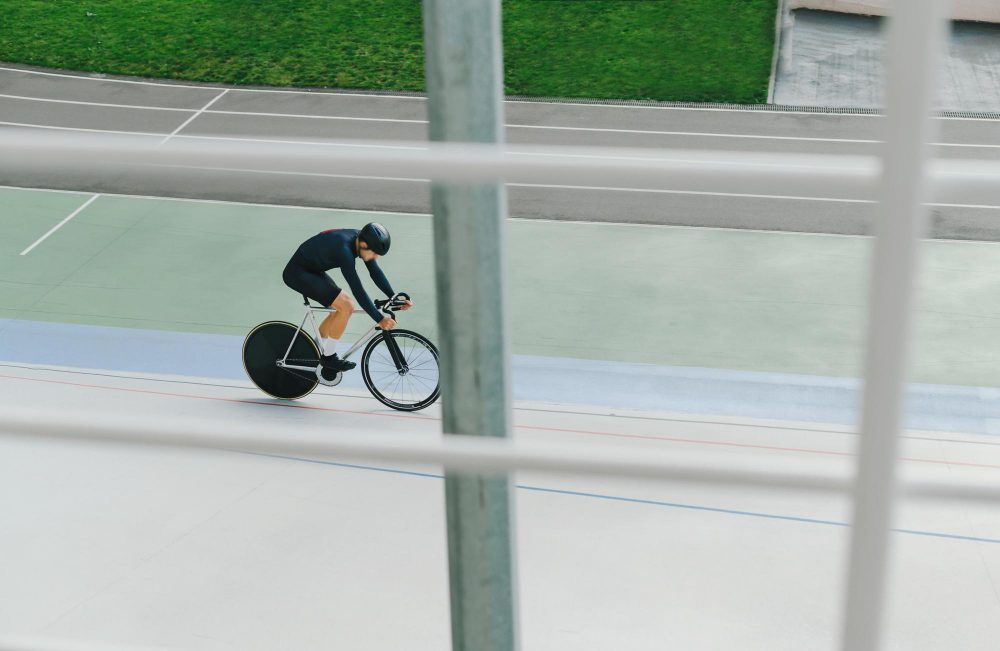How many calories do you burn cycling 100 miles?
Cycling is a popular form of exercise and a great way to stay fit and healthy. Whether you are an avid cyclist or just starting out, you may be curious about the number of calories burned during a long-distance ride. In this article, we will explore the topic of how many calories you can expect to burn when cycling 100 miles.
The Basics of Caloric Burn
To understand how many calories you burn while cycling, it is essential to consider several factors. These include your body weight, speed, terrain, and even wind resistance. Generally, the more you weigh and the faster you cycle, the more calories you will burn. Cycling on hilly terrains also requires more energy expenditure compared to flat surfaces.
In general, the number of calories burned during exercise is measured in METs (Metabolic Equivalent of Tasks). METs represent the ratio of the rate of energy expended during an activity to the rate of energy expended at rest. The higher the MET value, the more calories you burn.
Estimating Calories Burned Cycling 100 Miles
Estimating the exact number of calories burned when cycling 100 miles can be challenging due to the variations discussed earlier. However, we can provide a rough estimate based on average values.
On average, a person weighing around 150 pounds can expect to burn approximately 2400-3000 calories when cycling 100 miles at a moderate pace of 12-14 miles per hour. This estimate assumes primarily flat terrain with minimal wind resistance.
Keep in mind that cycling speed greatly affects caloric burn. If you increase your speed to 16-20 miles per hour, you can burn around 3500-4000 calories for the same distance and body weight. On the other hand, cycling at a leisurely pace of 8-10 miles per hour may result in burning around 1900-2300 calories.
Factors Affecting Caloric Burn
As mentioned earlier, several factors influence caloric burn during cycling. These include:
- Body Weight: Heavier individuals tend to burn more calories due to increased effort required to move their body weight.
- Cycling Speed: Cycling at higher speeds increases energy expenditure and thus burns more calories.
- Terrain: Hilly terrains demand more energy and result in higher caloric burn compared to flat surfaces.
- Wind Resistance: Cycling against strong headwinds can significantly increase the number of calories burned.
Incorporating Cycling into Your Fitness Routine
Cycling is not only a great way to burn calories but also provides various health benefits. Regular cycling can help improve cardiovascular fitness, strengthen muscles, and promote weight loss. To make the most of your cycling sessions, consider the following tips:
- Vary Your Intensity: Incorporate both steady-paced rides and interval training to challenge your body and burn more calories.
- Combine with Strength Training: Include regular strength training exercises off the bike to build muscle and boost metabolism.
- Stay Hydrated: Remember to drink plenty of water before, during, and after your rides to stay hydrated and maintain optimal performance.
- Wear Protective Gear: Safety should always be a priority. Wear a helmet and appropriate cycling gear to protect yourself from accidents.
“Cycling is a fantastic way to burn calories, improve fitness, and enjoy the outdoors. Whether you’re cycling for leisure or training for a long-distance ride, it’s important to consider factors that influence caloric burn.”
In conclusion, the number of calories burned when cycling 100 miles depends on various factors such as body weight, speed, terrain, and wind resistance. By considering these factors, you can estimate the approximate number of calories burned during your rides. Remember to listen to your body, stay safe, and enjoy the many benefits of cycling!
Can you bike 50 miles without training?
The challenge of biking 50 miles
If you’re an avid cyclist or have experience with long-distance rides, you might be wondering if it’s possible to bike 50 miles without any training. While it’s not impossible, it’s important to understand the challenges that come with such a feat.
The physical demands
Biking 50 miles requires a certain level of fitness and endurance. Without proper training, your body may not be prepared for the physical demands of such a long ride. The muscles in your legs, back, and core need to be trained and conditioned to handle the strain of cycling for an extended period.
The importance of training
Training before attempting a 50-mile ride is crucial for several reasons. Firstly, it helps improve your cardiovascular fitness, allowing your heart and lungs to efficiently deliver oxygen to your muscles. Secondly, training helps strengthen the muscles used in cycling, reducing the risk of injuries and fatigue during the ride.
Tips for preparing for a 50-mile ride
- Start with shorter rides: Gradually increase the distance of your rides leading up to the 50-mile mark. This will help your body adjust and build endurance.
- Incorporate interval training: Interval training involves alternating between periods of high-intensity effort and recovery. This can help improve your overall fitness and stamina.
- Pay attention to nutrition: Fueling your body with the right nutrients is essential for endurance exercise. Make sure to eat a balanced diet and stay hydrated before, during, and after your rides.
“Training before attempting a 50-mile ride is crucial for several reasons.”
Remember, biking 50 miles without training can put undue stress on your body and increase the risk of injury. It’s important to gradually build up your fitness levels and train adequately before taking on such a challenge. With the right preparation and training, you’ll be better equipped to enjoy the ride and achieve your goal of completing 50 miles on your bike.
How long would it take to cycle 100k?
Cycling can be a great way to challenge yourself and achieve personal milestones. If you’re wondering how long it would take to cycle 100 kilometers (100k), there are several factors to consider.
1. Fitness Level
Your current fitness level will play a significant role in determining how long it would take you to cycle 100k. Regular cyclists with excellent cardiovascular endurance may complete this distance more quickly than occasional riders or beginners.
2. Terrain
The terrain you’ll be cycling on also affects the time it takes to cover 100k. If you’re riding on predominantly flat roads or bike paths, you may be able to maintain a consistent speed and complete the distance faster. However, if you encounter hills or challenging terrains, your average speed may decrease, resulting in a longer ride.
3. Speed
Your cycling speed is a crucial factor in determining the time needed for a 100k ride. Experienced cyclists can maintain an average speed of around 25-30 kilometers per hour, completing the distance in approximately 3-4 hours. However, beginners or those who prefer a more leisurely pace might take 4-6 hours or even longer to complete the distance.
4. Rest Stops and Breaks
It’s important to factor in rest stops and breaks during your 100k ride. Taking breaks allows you to rehydrate, refuel, and give your muscles some rest. The duration and frequency of these breaks will impact your overall cycling time.
Remember: Safety should always be a priority when cycling, so don’t hesitate to take breaks whenever necessary and listen to your body.
5. Other Variables
Other variables to consider include weather conditions, such as wind or rain, which can affect your speed and comfort during the ride. Traffic congestion, road conditions, and any unforeseen circumstances can also impact your cycling time.
Ultimately, estimating the time it would take to cycle 100k depends on individual factors and circumstances. It is always best to plan ahead, set realistic goals, and enjoy the journey rather than focusing solely on the time taken to complete the distance.
Can a beginner cycle 50km?
Many beginners often wonder if they are capable of cycling long distances, such as 50 kilometers. The answer is yes! With proper preparation, anyone can achieve this goal. Here are some tips to help you on your way:
Get the Right Equipment
Investing in a good quality bike and ensuring it is the right size for you is essential for a comfortable ride. Make sure to wear appropriate gear, including a helmet and padded shorts, to enhance your comfort and safety.
Start Slow and Build Endurance
Beginners should start by gradually increasing their cycling distances. Start with shorter rides and gradually build up to longer distances. This will help your body adapt and improve your endurance over time.
Follow a Training Plan
Having a structured training plan can be helpful for beginners. It will guide you on how much to ride each week, giving you a clear progression towards your goal. Incorporate both shorter, more intense rides and longer, steady-paced rides into your plan.
Proper Nutrition and Hydration
When embarking on longer rides, it’s important to fuel your body properly. Make sure to consume a balanced meal before your ride and carry snacks or energy gels for sustained energy during the ride. Stay hydrated by drinking water regularly throughout the ride.
Believe in Yourself
One of the most important factors in achieving any goal is self-belief. Don’t underestimate your abilities as a beginner cyclist. With determination and practice, you will be surprised at what you can achieve.
“The biggest challenge in cycling long distances is not physical; it’s mental. Believe in yourself and keep pushing forward.”
Remember, cycling 50 kilometers may seem like a daunting task for a beginner, but with proper preparation, training, and belief in yourself, it is absolutely achievable. Set small goals along the way and enjoy the journey as you progress towards your 50-kilometer milestone.
How hard is it to cycle 80km?
Cycling can be a great way to stay fit and explore the outdoors. Whether you are an experienced cyclist or just starting out, setting a goal to cycle a certain distance can be a great way to challenge yourself. One such distance that many cyclists aim for is 80km, which is approximately 50 miles.
Training and Preparation
Cycling 80km requires proper training and preparation. It is important to gradually increase your cycling distance and endurance over time. Start with shorter rides and gradually add more miles each week. Incorporate both long and short rides into your training regimen to improve your cardiovascular fitness and build strength in your legs.
Proper nutrition and hydration are also key when preparing to cycle 80km. Make sure to fuel your body with a balanced diet and drink plenty of water before, during, and after your rides. Consider carrying snacks and energy gels with you to replenish your energy levels during the ride.
Physical and Mental Challenges
Cycling 80km can be physically demanding, especially if you are not accustomed to longer distances. You may experience muscle fatigue and soreness, particularly in your legs and lower back. However, with consistent training and proper rest, you can gradually build the necessary strength and endurance to overcome these challenges.
Mental stamina is equally important when tackling longer rides. There may be moments when you feel tired or doubt your ability to complete the distance. This is when mental toughness and determination come into play. Stay focused, set small goals along the way, and remind yourself of the rewards that await at the finish line.
“Cycling is not just about the physical exertion, but also about overcoming mental barriers.”
Tips for Cycling 80km
- Plan your route: Choose a scenic and relatively flat route to make the ride more enjoyable.
- Get the right gear: Ensure your bicycle is in good condition and invest in padded cycling shorts and a comfortable helmet.
- Pace yourself: Start at a comfortable pace and maintain a steady effort throughout the ride to avoid burnout.
- Stay hydrated: Drink water regularly and consider electrolyte-replenishing drinks to prevent dehydration.
- Take breaks: Plan rest stops along the route to stretch, refuel, and give your muscles a break.
- Listen to your body: If you experience pain or extreme fatigue, don’t hesitate to take it easy or stop if necessary.
Cycling 80km can be a challenging but rewarding experience. With the right training, preparation, and mindset, you can conquer this distance and enjoy the sense of achievement that comes with it. So, get on your bike, put in the miles, and embrace the adventure!



